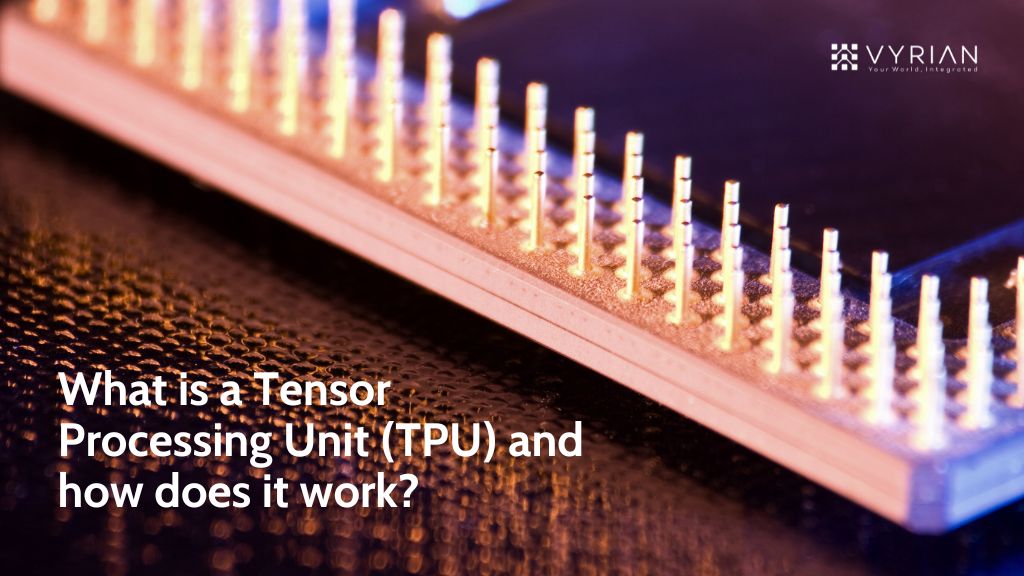Overview
A Tensor Processing Unit (TPU) is an application-specific integrated circuit (ASIC) developed by Google to accelerate machine learning workloads, particularly those involving neural networks. Introduced in 2015, TPUs are optimized for TensorFlow, Google's open-source machine learning framework, and are utilized across various Google services and products.
History
Google began developing TPUs to address the growing computational demands of machine learning applications. The first-generation TPU was introduced in 2015 and was primarily used internally to enhance the performance of Google's services. Subsequent generations have been released with significant improvements:
- •
Second Generation (2017): Featured increased memory bandwidth and support for floating-point computations, making it suitable for both training and inference tasks.
- •
Third Generation (2018): Offered twice the performance of its predecessor and was deployed in larger pods, enhancing scalability.
- •
Fourth Generation (2021): Achieved over twice the performance of the third generation, with a single pod containing 4,096 TPU v4 chips.
Source
- •
Fifth Generation (2023): Introduced TPU v5p, designed to run in pods of 8,960 chips, achieving twice the raw performance of its predecessor, with liquid cooling to maintain optimal performance.
Source
- •
Sixth Generation (2024): Known as Trillium, this generation offered a 4.7 times performance increase relative to TPU v5e, with larger matrix multiplication units and increased clock speed.
Source
- •
Seventh Generation (2025): Named Ironwood, this generation introduced configurations with up to 9,216 chips, achieving peak computational performance of 4,614 TFLOP/s.
Source
Architecture
TPUs are designed with a focus on high-throughput, low-precision arithmetic, which is well-suited for neural network computations. Key architectural features include:
- •
Matrix Multiply Unit (MXU): Enables efficient processing of large matrices, a common operation in machine learning models.
- •
High Bandwidth Memory (HBM): Provides rapid data access, reducing bottlenecks during computation.
- •
Systolic Array Design: Facilitates parallel processing of data, enhancing performance and energy efficiency.
Source
Applications
TPUs are employed across a variety of fields that require the processing of large datasets and complex machine-learning models, including:
- •
Image Recognition and Processing: Speeding up the training and inference phases of convolutional neural networks (CNNs).
Source
- •
Natural Language Processing (NLP): Supporting large-scale models like transformers for language understanding and generation.
Source
- •
Autonomous Vehicles: Accelerating the real-time processing required for the perception and decision-making components of self-driving cars.
Source
- •
Healthcare: Enabling faster and more efficient analysis of medical imagery and genetic data for personalized medicine and diagnostics.
Source
- •
Scientific Research: Processing vast amounts of data from experiments and simulations, especially in fields such as physics and astronomy.
Source
- •
Financial Services: Analyzing large datasets for risk assessment, fraud detection, and algorithmic trading, where speed and accuracy significantly impact outcomes.
Source
Comparison to GPUs and CPUs
While TPUs, GPUs, and CPUs are all processors, they are designed for very different purposes:
- •
CPUs (Central Processing Units): General-purpose processors capable of handling a wide range of tasks but may be less efficient for parallel processing required in machine learning.
- •
GPUs (Graphics Processing Units): Designed for parallel processing, making them suitable for machine learning tasks, but they may consume more power and be less specialized than TPUs.
- •
TPUs: Specifically designed for machine learning workloads, offering high performance and energy efficiency for tasks involving large-scale matrix computations.
Source
Cloud TPU
Google offers TPUs as part of its cloud infrastructure, allowing third-party developers to accelerate their machine learning workloads. Cloud TPUs are integrated with TensorFlow and other machine learning frameworks, providing scalable and efficient processing power for training and inference tasks. Source
Edge TPU
In addition to data center TPUs, Google has developed Edge TPUs designed for deployment in edge devices. These smaller, power-efficient chips enable machine learning inference directly on devices such as smartphones and IoT devices, reducing latency and reliance on cloud computing. Source
Legal Considerations
In 2019, Singular Computing filed a lawsuit against Google, alleging patent infringement related to TPU technology. The case has involved multiple patents and is ongoing as of 2024. Source
Future Developments
Google continues to advance TPU technology, with each generation offering significant improvements in performance and efficiency. The development of TPUs reflects the growing demand for specialized hardware to support the expanding field of artificial intelligence and machine learning.
